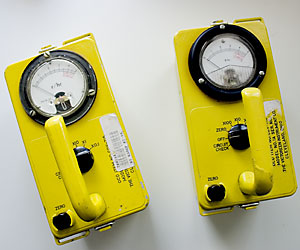Ether 3 Material Culture


In addition to the arms race, the superpowers waged the Cold War through material culture. Urbanity as the product of structures would be replaced by urbanity constituted through a system of objects, consumer goods that rapidly exported the metropolis over and over again throughout the world.
Although skirmishes took place over peripheral territories such as Vietnam, Cuba, and Afghanistan, the Cold War really took place at the level of global trade. With Stalinism, Marx’s dream of overcoming the problem of alienated labor had been abandoned and instead, Soviet Communism followed Capitalism to focus on industrial productivity and expansion within a newly global market. Just as the United States exported its products – and eventually outsourced its production – throughout the world, the Soviets created Comecon, the Council for Mutual Economic Assistance, to eliminate trade barriers among Communist countries.
The superpowers fought the Cold War through their display of achievements in science, propaganda, and accumulation. Each country produced objects to represent its superior quality of life, validating each system not only to its own citizens, but also to each other and to the rest of the world.
The culmination of material culture’s role in the Cold War was the 1959 Nixon-Khrushchev Kitchen Debate, played out between the two powers in a demonstration kitchen at a model American house during the American National Exhibit in Moscow. At the debate, Nixon and Khruschev compared the technologies of the two superpowers and the social and political ideologies behind them by comparing the quality of products. A Cold War battle was fought through housewares. In the course of the debate, vice-president Nixon stated “Would it not be better to compete in the relative merits of washing machines than in the strength of rockets?”
By the sixties, production became a goal in and of itself, devoid of logic and use and no longer tied to the basic needs of the economy. In 1961 Khrushchev launched the Third Economic Program to increase the Soviet Union’s production of industrial goods at all costs. The objects of the program were finally met by the early 1980s, but by that point the United States was no longer interested in production. For America, manufacturing of objects proved more useful when outsourced to the developing world. By sending its production overseas, America assured the success of its ideology in the global sphere while concentrating on the production of the virtual. Having spent itself on production of objects, as well as on more bluntly applied foreign aid, the Soviet Union collapsed.